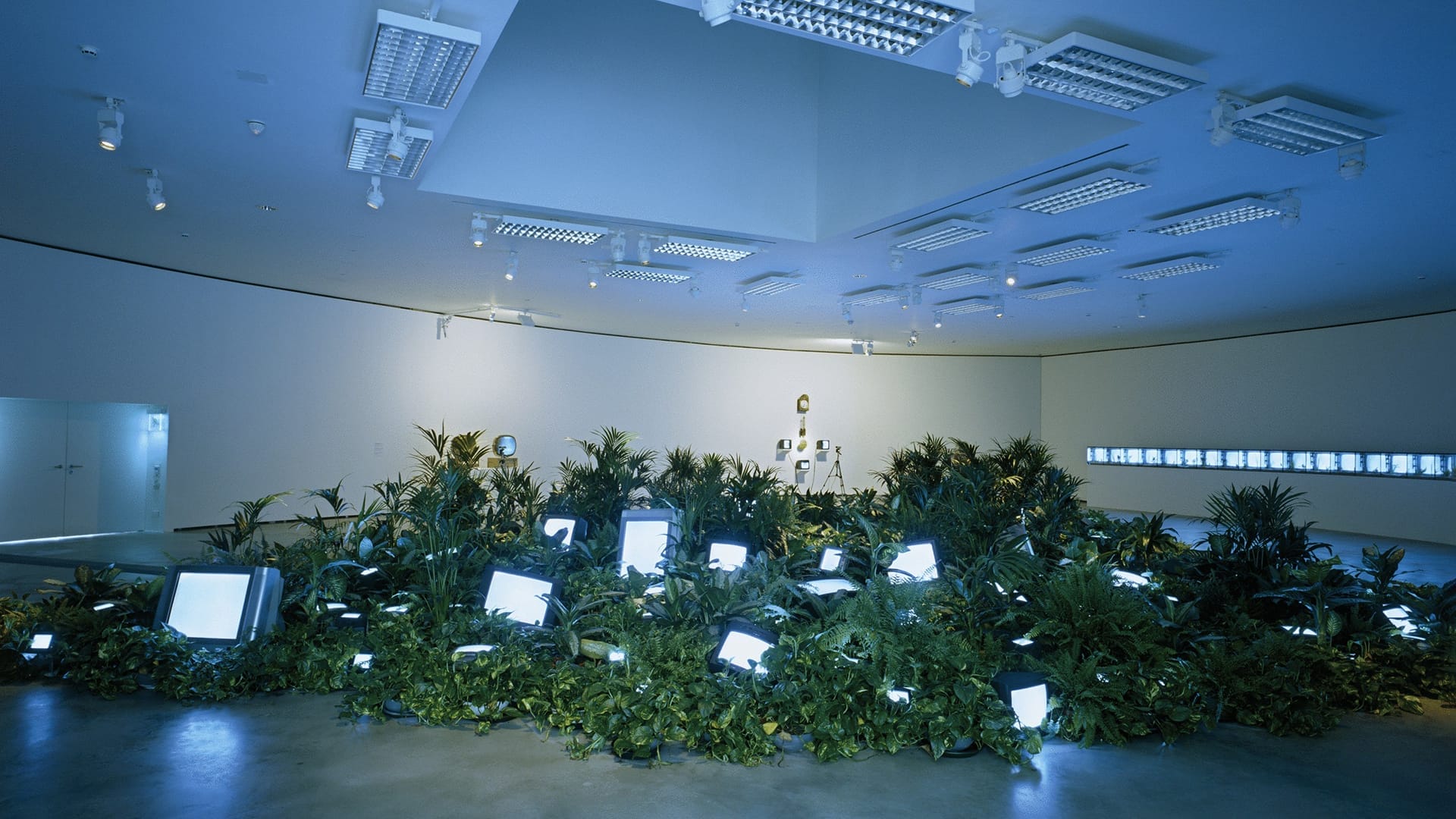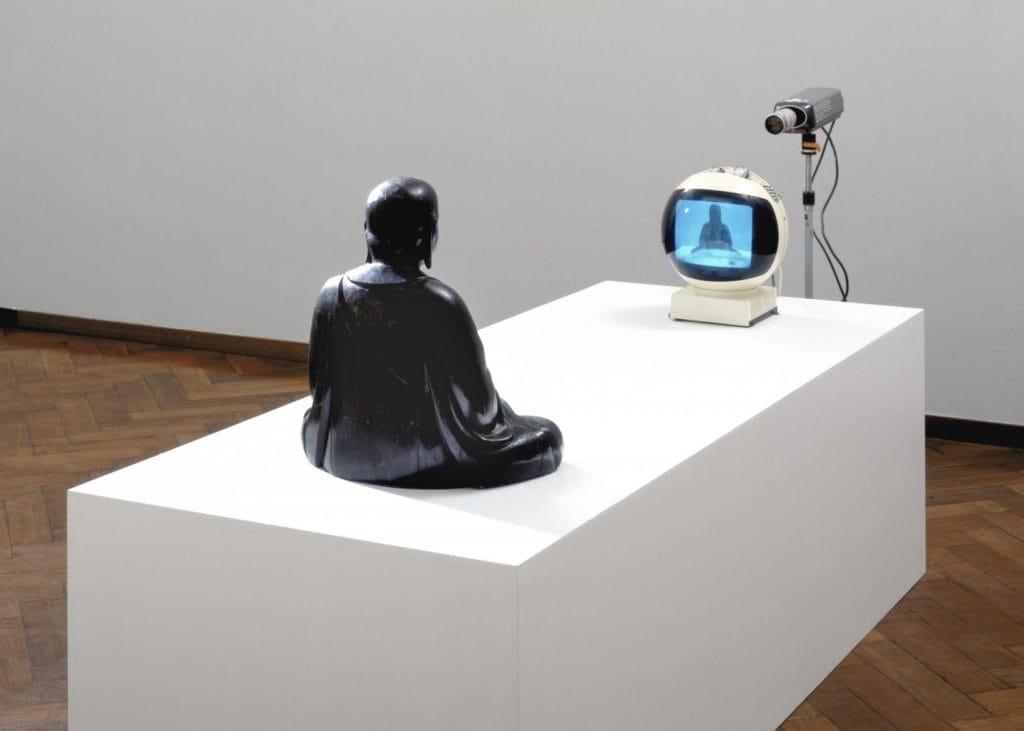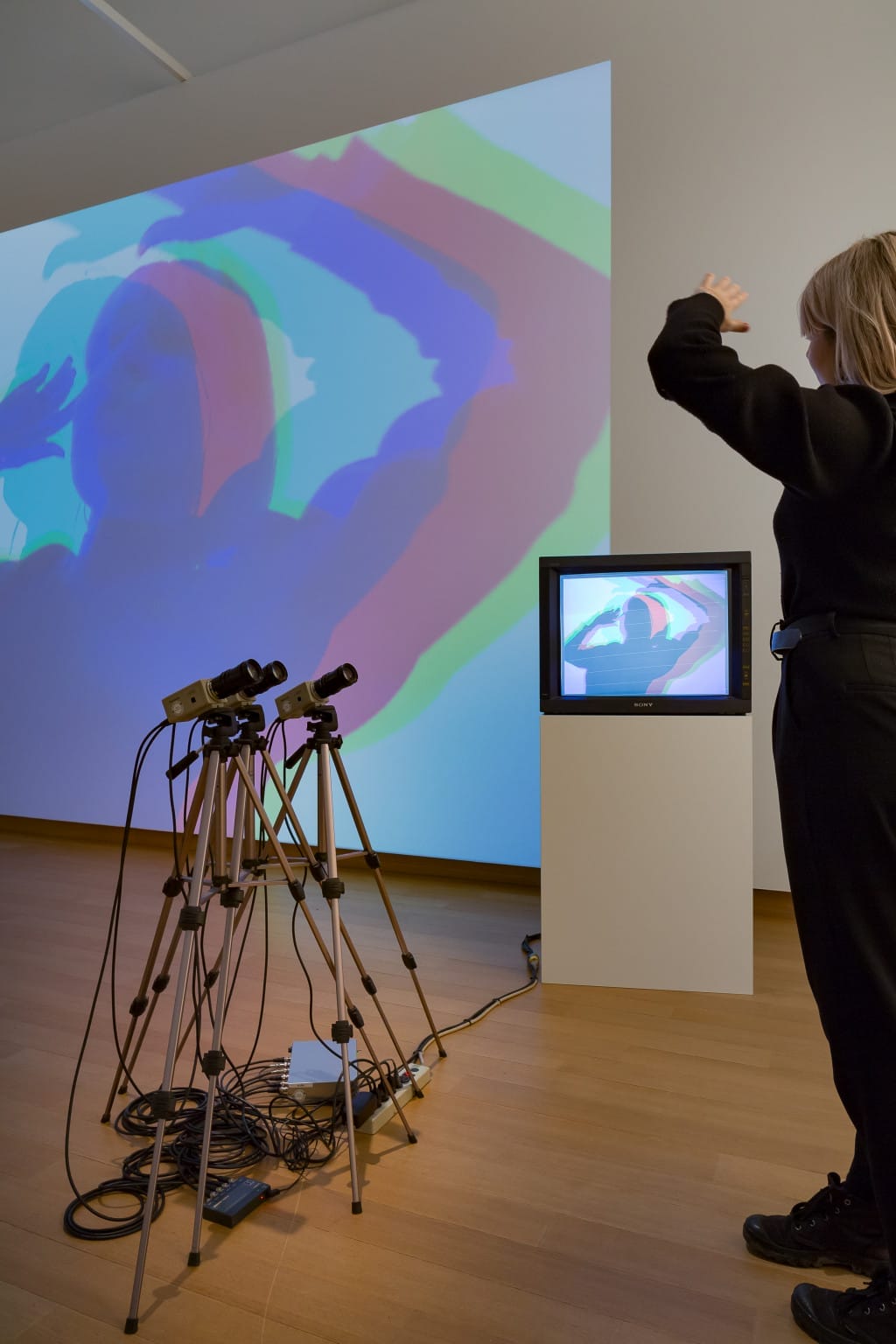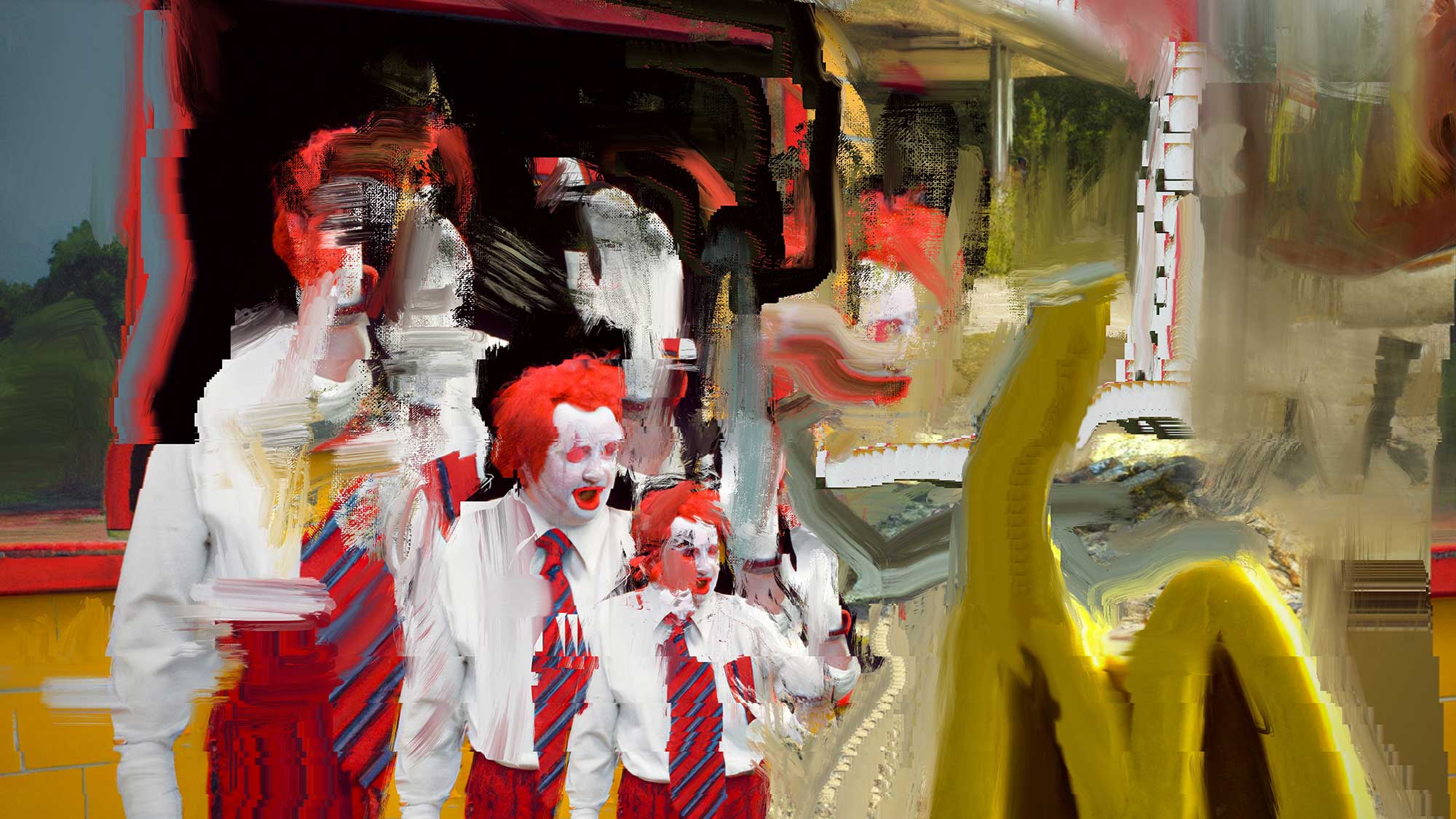
Nam June Paik: a Visionary in Modern Media
Nam June Paik, born on July 20, 1932, in Seoul, South Korea, emerged from an environment steeped in cultural upheaval and creative ferment. As the fifth child in a family led by a textile manufacturer, Paik’s childhood was set against the backdrop of the Korean War. This tumultuous period forced his family to seek refuge, first in Hong Kong and subsequently in Japan, instilling in Paik an early sense of global awareness and adaptability.
Paik’s artistic inclinations were nurtured in Seoul’s Kyunggi High School, where he not only pursued a conventional education but also engaged in private piano lessons and composition studies. This early exposure to music laid a foundational stone in what would become a lifelong journey in the arts. Paik’s musical prowess and academic diligence led him to Tokyo University, where he furthered his education and honed his artistic skills. Upon graduating in 1956, Paik embarked on a significant chapter in his life by moving to Germany.
Germany’s vibrant and progressive arts scene became a crucible for Paik’s developing artistic vision. At the University of Munich, he immersed himself in the study of contemporary music, an experience that broadened his understanding of the artistic possibilities within sound. It was during this transformative period that Paik found himself at the Westdeutsche Rundfunk Studio for Electronic Music. Here, he worked alongside and drew inspiration from avant-garde luminaries like Karlheinz Stockhausen and Mary Bauermeister, absorbing the radical ideas that would profoundly shape his artistic direction.
The most pivotal moment in Paik’s formative years, however, came in 1958 at the Darmstadt International Summer School Course for New Music. It was here that he encountered John Cage, a figure whose innovative approach to performance and art would leave an indelible mark on Paik. Cage’s experimental and boundary-pushing methods resonated deeply with Paik, igniting a spark that would lead him to explore and redefine the realms of performance and art. This encounter, coupled with his diverse cultural experiences and musical background, laid the groundwork for Paik’s emergence as a pioneering force in the world of video art and multimedia experimentation.

International Recognition and Artistic Collaborations
In 1961, Nam June Paik’s artistic journey took a significant turn when he encountered George Maciunas, the visionary founder of the Fluxus movement. Fluxus, known for its experimental and non-conformist approach, was a melting pot of artistic mediums and styles, breaking traditional boundaries of art and culture. This movement was characterized by its avant-garde fusion of various art forms, including visual art, music, and performance. Paik, with his eclectic background and innate inclination towards innovation, quickly emerged as a prominent figure within this movement. He collaborated and ideated with other Fluxus members like La Monte Young and Benjamin Patterson, artists known for their experimental music and performances.
In 1963, Paik unveiled his groundbreaking solo exhibition, “Exposition of Music-Electronic Television,” which marked a defining moment in his career and the broader scope of video art. This exhibition showcased his unique ability to synthesize music, technology, and visual art, creating an immersive and thought-provoking experience. It was a bold foray into the use of television and electronic components as artistic mediums, challenging the conventional perceptions of television as merely a tool for mass communication.
Paik’s relocation to New York City in 1964 was another catalyst in his artistic evolution. The vibrant and eclectic art scene of New York provided Paik with new opportunities and platforms for collaboration. Among the most significant of these collaborations was with Charlotte Moorman, a classically trained cellist and performance artist. Moorman, known for her daring performances, became an instrumental figure in bringing Paik’s visions to life. Together, they pushed the boundaries of performance art, incorporating electronic technology and video into live performances, thereby creating a new form of art that was both engaging and provocative.
During this period, Paik’s experimentation with video technology took a leap forward with the introduction of Sony’s Porta Pack, the first portable video recorder. Paik utilized this technology to its fullest potential, exploring the fluidity and dynamic nature of video as an art form. His work with the Porta Pack not only demonstrated his ingenuity but also his foresight in understanding the impact of technology on art and society. Paik’s innovative use of video technology was not just a technical achievement; it was a bold statement on the democratization of art and media, foreseeing a future where video and electronic media would become integral parts of artistic expression and communication.
Through his involvement with Fluxus and his pioneering work in video art, Nam June Paik played a crucial role in redefining the artistic landscape of the 20th century. His explorations went beyond the traditional confines of art, blending technology, music, and performance to create a new, immersive experience. This period of Paik’s career was not only a testament to his visionary approach but also a foundational chapter in the history of contemporary art, setting the stage for future generations of artists to explore and expand upon.

Legacy and Influence
Nam June Paik’s passing on January 29, 2006, in Miami Beach, Florida, was not merely the loss of a pioneering artist but also the closing of a chapter in the history of modern art. Known as the father of video art, Paik’s influence extends far beyond the realms of conventional artistic practice. He was a visionary who revolutionized the way technology is integrated into art, foreseeing its profound impact on interpersonal communication and the media landscape.
Paik’s work, characterized by its innovative use of electronic media and humorous critique of contemporary culture, challenged and redefined the boundaries of art. He was among the first to understand and exploit the potential of television and video, not just as mediums for entertainment or news but as powerful tools for artistic expression. His installations and performances, often whimsical yet thought-provoking, broke new ground and paved the way for the digital and multimedia art forms that are prevalent today.
The legacy of Nam June Paik is celebrated and perpetuated through various exhibitions and retrospectives that showcase his life’s work. Notably, the 2015 exhibition “Watch This! Revelations in Media Art” at the Smithsonian American Art Museum offered a comprehensive overview of his contributions and their impact on media art. Similarly, the Gagosian Gallery’s acquisition of Paik’s artistic estate has played a significant role in maintaining his presence in the art world, ensuring that his innovative spirit continues to inspire and influence.
Paik’s approach to art was not just about the aesthetic or the technical but also deeply rooted in his understanding of global culture and communication. His works often served as a bridge, connecting disparate cultures and ideas, reflecting his own multicultural experiences. He showed how art could transcend language and cultural barriers, creating a universal language of images and symbols.
Moreover, Paik’s influence extends into the realms of academia, where his theories and practices are studied and revered. His foresight in anticipating the fusion of technology, art, and communication has become a subject of study in various disciplines, from media studies to art history. The interdisciplinary nature of his work continues to inspire researchers and practitioners alike, sparking dialogues about the future of art and technology.
Nam June Paik’s journey from a war-torn childhood to becoming a global icon in the art world is not just a story of personal achievement but also a testament to the power of creativity and innovation. His life and work continue to inspire a new generation of artists, encouraging them to explore and experiment with new mediums and technologies. His legacy is a reminder that art is a dynamic and ever-evolving field, capable of embracing change and reflecting the complexities of the modern world. In essence, Nam June Paik was more than an artist; he was a catalyst for change, a pioneer who reimagined the possibilities of art in the age of technology.

fakewhale
Founded in 2021, Fakewhale advocates the digital art market's evolution. Viewing NFT technology as a container for art, and leveraging the expansive scope of digital culture, Fakewhale strives to shape a new ecosystem in which art and technology become the starting point, rather than the final destination.
You may also like
Frenetik Void in Conversation with Fakewhale
Introducing Frenetik Void Artist: Frenetik Void – Birthplace: Buenos Aires, Argentina, 1994 &#
Claudia Koh, Soft Spot at Super Dakota, Brussels
“Soft Spot” by Claudia Koh, curated by Super Dakota, at Super Dakota, Brussels, 12/03/20
Norman Harman: The Art of Digital Fragments and Analog Realities
Norman Harman is a visual artist from Scotland who blends the aesthetics of figurative, landscape an




